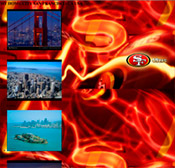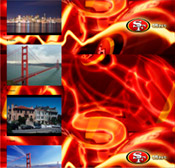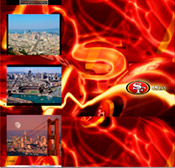With a better understanding of My Journey with Photography Watermarks and how the Evolution of a Watermark has factored into my online marketing, I wanted to share how these efforts have translated in my reaching new audiences and generated new client opportunities.
Effort and Reward of Watermarking
No doubt many after reading my first to articles on the topic of photo watermarking are asking, “Why put yourself through the effort?” As noted I’m a firm believer in ensuring proper attribution of a photo and notifying viewers that my photography is copyrighted. This addresses a high priority of mine to protect my photographic work from a legal perspective, in conjunction with my formal copyright filings with the U.S. Library of Congress (See Copyrights: Protecting My Photograph). In essence addressing a long term need of mine. On the flip-side the concept of using watermarks as a “calling card”, including my name and web site URL, addresses a short term need to notify others where to find my work and learn more about my services. My style of photo watermark serves this purpose well whether my photographs are found on my web sites, photo forums I contribute to, hot-linked from my server and placed on another web site or more blatantly illegally copied and distributed.
This is the part where several of you reading this post will think, “That’s a lot of work for something that isn’t really happening all that much.” Of course the number of times that a photo is used with out your permission is dependent on a lot of factors. Ultimately I can say whether you’re aware of it or not your online photographs are being used somewhere online with out your knowledge. Whether or not this bothers you enough to do something about it or jeopardizes your online efforts is a personal matter. My way isn’t for everyone. I can only say that if my efforts weren’t yielding results I wouldn’t do it.
“How did you find my photo?”
There are several ways to track infringement online, but such solutions are not refined at the moment and it still requires a good degree of determination, luck and stupidity on the part of those infringing your work. Technology automatically tracking infringement is still relatively nascent. The best solutions are marketed to big players like movie studios, stock agencies, etc. The methods or tools by which I find infringed work are as follows:
- Google Alerts – The Google Alert for my name picks off many copyright infringers who mistakenly assume photos found online are free as long as you provide attribution.
- Server Logs – I review my server logs nearly daily to track unusual traffic to image files.
- Google Images – I utilize Google Images from time to time to see if my photographs are coming up on different sites. I’ll search highly trafficked subjects on my web site and yield a few to dozens of instances of infringement with a Google Image search.
- TinEye – While TinEye.com has a limited index at the moment I still will find photos of mine from time to time that have been cropped or embedded in other photo montages or digital art. (See Who Is Stealing Your Photos Online?)
- Asking – Simply put I ask those that contact me about licensing my photography how they found my work. Most of the time prospective clients will mention legitimate sources, but many times I’ll find out that my work was seen on a site infringing my work.
Of course “asking” is the most basic of methods and one that I recommend the most. It’s simple, easy and most people will respond. It’s also the way I find some of the most surprising cases of not just infringement, but marketing. Surely increased exposure, as in number of locations an image can be found, is helpful when it comes to reaching new audiences and this is likely a factor. Some might argue that free distribution is the factor here supporting the “give it all away for free” mentality. But no matter which side of the coin you look at on this matter the reason I get this far in the process of finding out how some one found me is by having the “calling card” aspect of my watermark in place.
Case in point last week I had two instances where prospective clients found my work on sites infringing my photography. This aggravated me to no end and left me scratching my head. After my frustration subsided a bit I realized that my watermark was working and it was likely that others with limited or no watermarks were getting shut out of these opportunities.
| Whose Going To Be Getting Contacted? | ||
 Click to Enlarge |
 Click to Enlarge |
 Click to Enlarge |
Quality of New Opportunities & the Spectrum of Success
Of course you have to wonder about the quality of opportunities an infringed photo on a personal or entry level commercial web site is going to yield. Strangely the people that have contacted me from such instances of infringement have been professionals, albeit working with limited budgets. Still all it takes is one new contact that has the budget to license work or is interested in commissioning work or services to make such watermarking efforts worthwhile. On the other end of the spectrum infringed photos are infringed photos. If a photo retains ones visual watermark, but has the embedded metadata stripped are you really in a better situation? My gut reaction is to say no, but that is just my take as landing a sizable revenue opportunity from these situations is akin to winning the lottery and an image less metadata is prone to becoming an orphaned work (Get up to speed on Orphan Works legislation). Even still I’d argue that the effort to watermark photos for online publishing is worth the effort particularly when great tools are available to you to make watermarking easy.
On that note stay tuned for my next entry in this series on photo watermarks as I’ll discuss Great Watermarking Tools.
[tags]Photography, Copyright, Watermark, Watermarking[/tags]

Pingback: Watermarks: Evolution of a Watermark | JMG-Galleries - Jim M. Goldstein Photography: travel, landscape, and nature pictures - stock photos and fine art prints
Jim : This and the earlier one are fantastic and critical posts for amateur photographers like me. Thank you so much for all this information. Appreciate your initiative on this front.
Jim, I’m one of those people who hates to look at a watermark. I have yet to see an unobtrusive one. On the other hand, nobody wants their work to be ripped off. It’s another case of a few bad apples making things suck for everybody. Eventually, everybody will use watermarks and we’ll viewers will learn to see right past them. We’ll go into a gallery to view some actual, unwatermarked prints and wonder what’s wrong with the picture. 😉
Nice series of posts Jim. I am also one who has come to terms with using watermarks for many of the same reasons you describe. I have attempted to create a balance between making it noticeable, but to lessen the intrusiveness as much as possible.
It is also my understanding that finding an image being used with a watermark that has been cloned out or removed can serve legally in proof of malicious intent.
http://www.photoattorney.com/2007/07/watermarks-can-be-music-to-your-ears.html
Well this answers my comment on yesterday’s post. Great work Jim.
Great post, I watermark my work and often find stolen images out in web land. I”m hoping that the embedded watermarks become more mainstream in the future with the Orphan works issues we are facing.
Pingback: >Re: PHOTO » Blog Archive » Copyright infringement & Visible Watermarking
Pingback: Pick of the Week: Link Edition – Mar 15, 2009 | Add The World
Jim, this post is from February of 2009 and your last line in this article said “On that note stay tuned for my next entry in this series on photo watermarks as I’ll discuss Great Watermarking Tools.” But there’s no link to a next article. Did you ever post a “Tools” post?